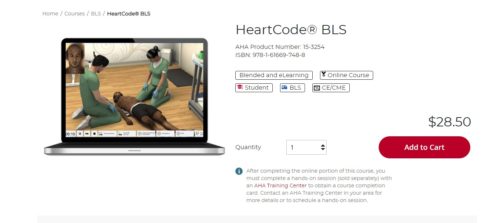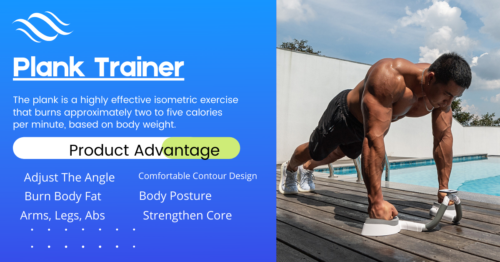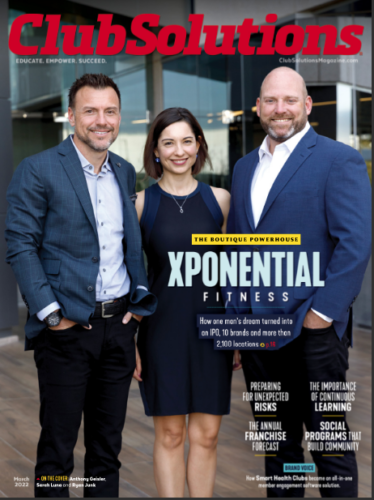
This new chain is flexing its muscles…6 locations in the past two months
Blink gym muscles in….
Blink Fitness, with its bright blue-and-orange walls and lists of Blink-isms (“Fitness in a blink”), is flexing its muscles in the low-cost gym industry. The brand, owned by luxury outfit Equinox, is expanding so rapidly throughout the five boroughs, Long Island, Westchester and New Jersey, you could say that every time you blink, another grand opening is announced.
Six locations have launched in the past two months alone, bringing the total to 24 gyms since the rollout began in January 2011 with a club in NoHo. Blink plans on doubling that number during the next 12 to 18 months, said Todd Magazine, executive vice president of new business at Equinox, which is best known for high-ticket fitness centers. Its “opening soon” list includes six more Blink locations during the first half of 2014, in Brooklyn, the Bronx, Queens, and Union and Jersey City, N.J.
By comparison, Equinox, which has 21 locations in Manhattan and Brooklyn and five in Westchester and on Long Island, is scheduled to open just two new clubs this year in New York City, on West 41st Street near Bryant Park and at 225 Liberty St. in lower Manhattan. The Blink gyms, which lack amenities such as swimming pools and saunas, are “scalable, and can be opened much more quickly” than the full-service Equinox gyms, said Dos Condon, vice president of Blink Fitness.
For $15 to $25 a month—depending on the neighborhood and whether users want access to single or multiple locations—and an annual maintenance fee of $29 or $39, Blink offers a basic gym with a lot of equipment, including treadmills, Exercycles, ellipticals and weight-training machines, as well as sessions with personal trainers for an additional charge. Blink doesn’t offer classes or even towels—unlike its big sister, Equinox, where memberships cost a heftier $160 to $200 a month.
When Equinox decided to launch Blink, it was responding to industry research that showed “the explosive growth in this sector during 2008 and 2009,” Mr. Condon said. “We looked at it, and we were stunned by what we saw.”
Indeed, a November 2013 report from global-business intelligence firm IBISWorld said that during the recession that followed the 2008 financial crisis, “consumers became more budget-conscious, which stimulated demand for low-cost gym memberships with few amenities.” The example the report cited is Planet Fitness, which had some clubs that were “signing up more than 1,000 new members each month in 2009,” at $10 to $19 a month. (Planet Fitness did not respond to phone calls.)
New markets
Because the business is highly competitive, Messrs. Magazine and Condon wouldn’t reveal Blink’s membership numbers, and they wouldn’t say how much it costs to open a Blink, or whether any of their locations are profitable yet. The one statistic that Mr. Condon did share is that, so far, about 42% of Blink’s members are joining a gym for the first time.
Industry consultant Rick Caro, president of Manhattan-based Management Vision, said Blink is “going into markets where typically a high-end club would not go; it wouldn’t fit,” citing the Blink on St. Ann’s Avenue in the Bronx. It is also raising the population of gym users beyond fitness buffs, which is “what the industry should be all about,” Mr. Caro said.
This is not Equinox’s initial stab at diversification. In 2008, it established the first American branch of Asia’s Pure Yoga—which now has two locations in Manhattan, on the Upper East and Upper West sides—and during that year, it also acquired cycling boutique Soul¬Cycle. In 2012, it partnered with the Union Square Hospitality Group to launch Creative Juice, which currently operates cafés in 10 Equinox locations in Manhattan and in its Greenwich, Conn., club.
Part of Blink’s formula is to put its branches not just where people live, but also near transit stops and retail hubs. For instance, one of the newest locations, in Astoria, Queens, is right next to the subway station for the R and M trains, and is also on Steinway Street, a major shopping district. “The location in Astoria checked all three boxes,” Mr. Magazine said.
Conny Perez, an assessor for a car dealer, joined the Astoria Blink on its opening day, Dec. 12, 2013. Her friend Joanne Donneys, a service coordinator for the deaf, also joined.
Both heard about the chain from friends, and said that they have had good experiences. “There’s so much equipment, you don’t have to wait,” Ms. Donneys said, while Ms. Perez noted that “other gyms don’t have half the equipment they have here.”
Saving money
In the category, known in the industry as high volume/low price, Blink has distinctions that should give it an advantage, Mr. Caro said. Rather than buying midlevel equipment like some of its competitors, Blink—thanks to Equinox’s deep-pocketed parent, the Related Cos., one of the country’s largest real estate development and property management firms—has been buying “the newest and best” so it won’t have to repair or replace it as often, Mr. Caro said, noting that having a real estate parent also gives it an edge with site acquisitions.
And many of Blink’s competitors are franchises, where the quality of the clubs can differ, but Blink is owned and operated by Equinox, which should make for more “consistency,” Mr. Caro said.
One way that Blink is saving money is by automating the enrollment process, Mr. Condon said. People can sign up online or go to a club and enroll via a kiosk with a touch screen.
According to Mr. Caro, that means that there are no commissioned salespeople, and “that takes a lot of cost out of the equation.”
The field is hardly wide open. Eric Casaburi, CEO of Retro Fitness, noted that Blink “is trying to play in a very crowded market with us, Planet Fitness and Crunch.”
Retro Fitness is a franchise operation founded in 2004 and headquartered in Colts Neck, N.J. It has gyms in 13 states but is heavily concentrated in the Greater New York area, where it has about 80 locations.
The company expects to add 20 to 25 clubs in the metropolitan area this year, including its first Manhattan site.
“We can compete better because we know what we’re doing,” he said. Asked about Equinox, he commented, “They’re newbies at this part of the game. If they hired me as a consultant, I would tell them not to leave the sandbox they’re familiar with because there are tons and tons of sand crabs.”
Retro Fitness also started out as a value gym, with a flat rate of $19.99 a month, which allows members to use any of its locations. But during the past 12 to 18 months, the chain has added group classes at all its clubs. (Some clubs charge an extra $10 a month for unlimited classes, while others don’t.) The chain has also added the kinds of amenities that people always pay extra for, such as child care and tanning, Mr. Casaburi said.
His point of view is that if someone lives or works near a Retro Fitness, “of course you’re joining my gym.”










































































